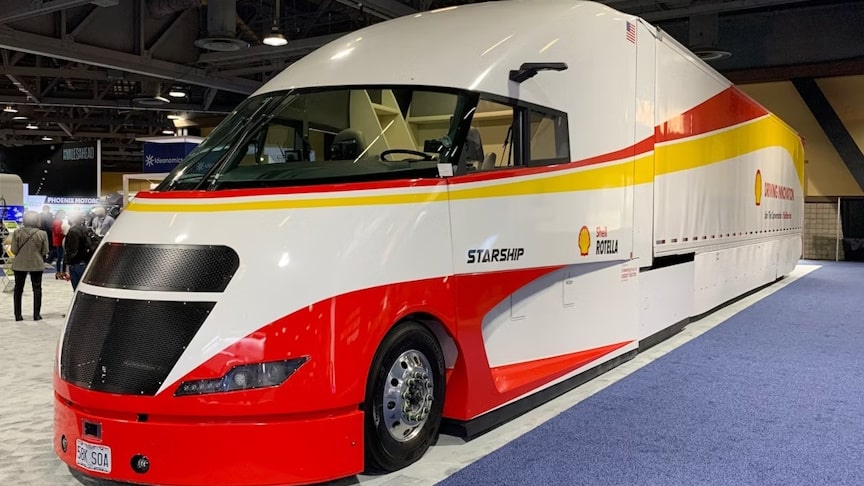Moving people and goods efficiently is vital to economic prosperity. Transport accounts for more than one quarter of the world’s total energy use and one fifth of global energy-related carbon dioxide emissions. Increasing efficiency and fuel economy in the transport sector could make considerable progress in helping to reduce emissions.
source.image: InterUnetAutomotive
We need to leverage the full power of innovation and collaboration to reduce CO2 in the most socially, environmentally and economically responsible way. This means doing things differently, and better than before. That’s why we have designed and built Shell Starship 2.0 – a hyper-aerodynamic, super fuel-efficient heavy–duty concept truck.
By bringing together the best of today’s commercially available technologies, we aim to find out just how energy efficient goods transported by road can be today, and elevate the conversation about energy transition. First launched in 2018, Shell Starship 1.0 shattered efficiency standards, so we took what we learned to the next level, and built Shell Starship 2.0.
Advertisement
In 2021, we took Shell Starship 2.0 on a coast-to-coast run like we did with Shell Starship 1.0, following the same route, in real-world conditions.
This time we increased the average speed, and increased the payload to 47,100 pounds or 23.55 tons (21.36 metric tonnes). If every truck in the United States could achieve Starship levels of efficiency, we could reduce CO2 emissions by on-highway trucking by approximately 71.5%. That’s avoiding 275 million tons of CO2 emissions every year.//source











